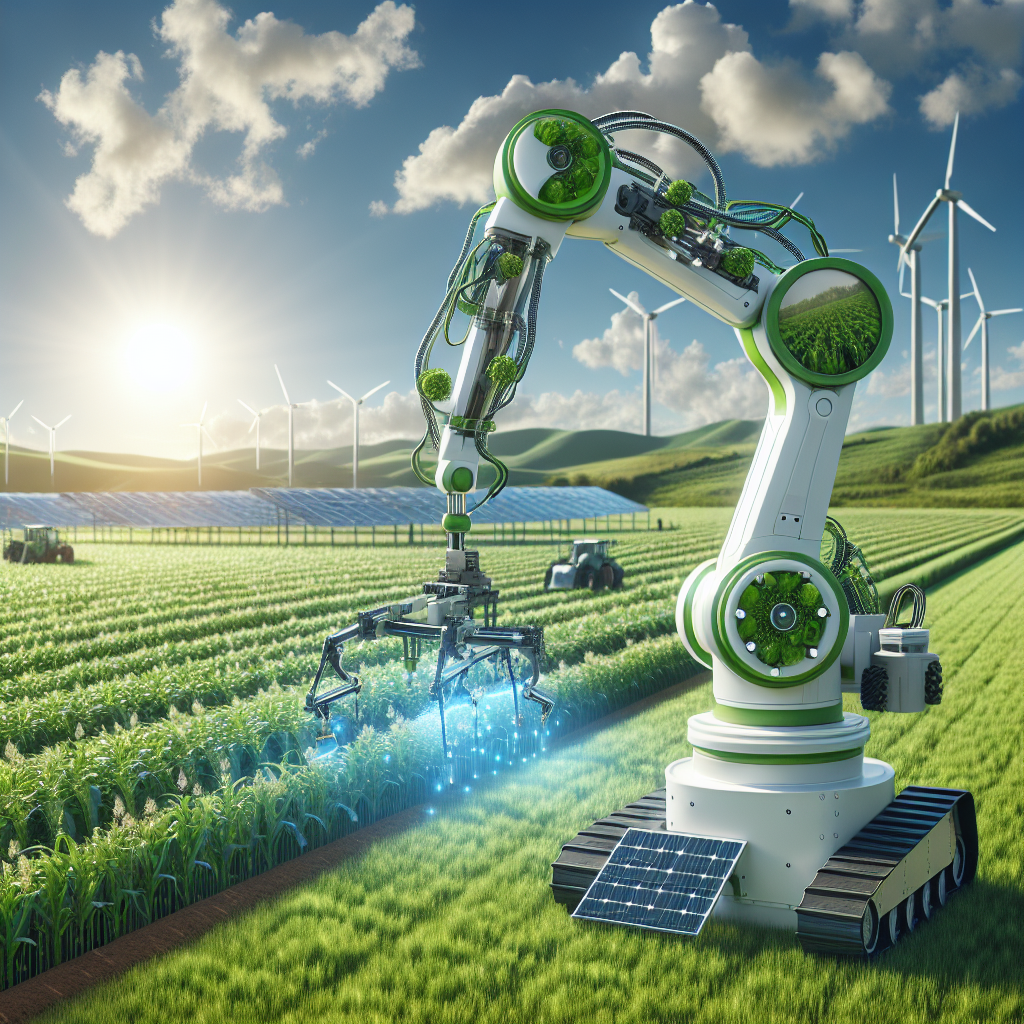Climate change is one of the biggest challenges facing our planet today. The impacts of climate change are already being felt around the world, with rising temperatures, changing weather patterns, and extreme weather events becoming more frequent. Agriculture is particularly vulnerable to the effects of climate change, as it relies heavily on factors such as temperature, rainfall, and soil quality.
In order to adapt to and mitigate the impacts of climate change on agriculture, innovative solutions are needed. One such solution is the use of artificial intelligence (AI) in agriculture, specifically in the form of climate-smart agriculture. Climate-smart agriculture is an approach to farming that aims to increase productivity, reduce greenhouse gas emissions, and build resilience to climate change.
Harnessing the power of AI for climate-smart agriculture has the potential to revolutionize the way we farm and help us address the challenges of climate change. AI can be used to collect and analyze vast amounts of data, predict weather patterns, optimize crop yields, and even monitor the health of crops and livestock. By using AI in agriculture, farmers can make more informed decisions, reduce waste, and increase efficiency, all while reducing their environmental impact.
One of the key benefits of using AI in agriculture is its ability to predict and adapt to changing weather patterns. With climate change leading to more extreme weather events, such as droughts, floods, and heatwaves, farmers need to be able to anticipate these changes and adjust their farming practices accordingly. AI can analyze historical weather data, satellite images, and other sources of information to predict future weather patterns and help farmers make decisions about planting, irrigation, and harvesting.
AI can also help farmers optimize their crop yields by analyzing data on soil quality, nutrient levels, and pest infestations. By using AI-powered tools, farmers can identify areas of their fields that need attention, such as areas with poor soil quality or high pest pressure, and take targeted actions to improve crop productivity. This not only helps farmers increase their yields, but also reduces the need for chemical inputs and promotes sustainable farming practices.
In addition to optimizing crop yields, AI can also be used to monitor the health of crops and livestock. By using sensors, drones, and other technologies, farmers can collect real-time data on the growth, health, and performance of their crops and livestock. This information can help farmers detect diseases early, identify nutrient deficiencies, and make informed decisions about when to harvest or cull their animals.
Overall, harnessing the power of AI for climate-smart agriculture has the potential to transform the way we farm and help us adapt to the challenges of climate change. By using AI to collect and analyze data, predict weather patterns, optimize crop yields, and monitor the health of crops and livestock, farmers can improve their productivity, reduce waste, and build resilience to climate change.
FAQs:
Q: How can AI help farmers adapt to climate change?
A: AI can help farmers adapt to climate change by predicting weather patterns, optimizing crop yields, and monitoring the health of crops and livestock. By using AI-powered tools, farmers can make more informed decisions about planting, irrigation, and harvesting, and take targeted actions to improve crop productivity.
Q: What are some examples of AI technologies being used in agriculture?
A: Some examples of AI technologies being used in agriculture include drones for crop monitoring, sensors for soil and crop health monitoring, and predictive analytics for weather forecasting. These technologies help farmers collect and analyze data, make informed decisions, and optimize their farming practices.
Q: How can AI help reduce the environmental impact of agriculture?
A: AI can help reduce the environmental impact of agriculture by optimizing crop yields, reducing waste, and promoting sustainable farming practices. By using AI to monitor the health of crops and livestock, farmers can detect diseases early, identify nutrient deficiencies, and reduce the need for chemical inputs.
Q: What are some of the challenges of using AI in agriculture?
A: Some of the challenges of using AI in agriculture include the cost of implementing AI technologies, the need for reliable data sources, and the potential for data privacy and security issues. However, with the right infrastructure and support, AI has the potential to revolutionize the way we farm and help us address the challenges of climate change.

